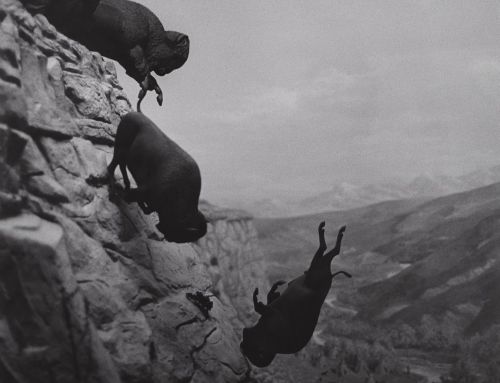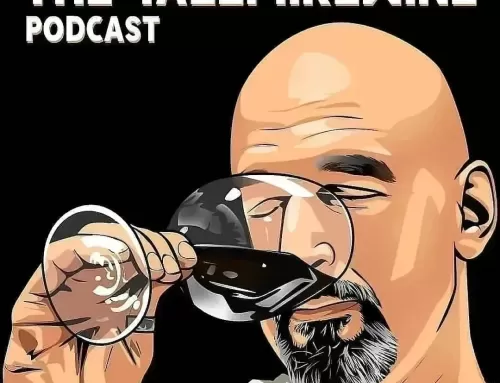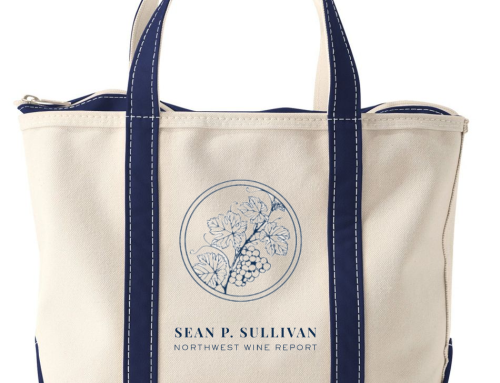
2010 was a challenging year for growers and winemakers alike in Washington (read harvest reports here). The weather was the coolest it had been in more than ten years (little did anyone know then that 2011 would be cooler). This provided for conditions that many of Washington’s recently minted growers and winemakers had never seen.
The cool – and at times wet – conditions led to botrytis issues in some areas, even on red grapes like Syrah, which, again, was something previously unseen. The order that different varieties normally ripen and are picked was thrown askew. Hands were wrung and brows were furrowed across the state.
While this might seem to have the potential to lead to complete calamity – and it certainly did seem like it might at the time – the results were far from calamitous. Some sublime wines were created in 2010.
One of the things that impresses me the most about the 2010 wines is their diversity and the difficulty of pigeonholing the vintage. Yes, on many wines the cooler temperatures led to lower alcohol levels but with good fruit concentration. But on other wines, the alcohol levels are just about where they would be in warmer years.
Yes, on some 2010 wines the acid levels are higher. In the better wines this leads to a vibrant sense of freshness not experienced in recent vintages; in others, this same quality makes the wines seem distinctly tart. Again though, for some wines, the acid levels are about where they were in previous years.
Some growers and winemakers adjusted to what the vintage gave them. Others did not. The latter cases present themselves in a variety of ways in the wines. In some, the oak levels are out of balance with the fruit. Or the higher acid levels resulted in tannins seeming more aggressive than might otherwise be the case.
But in other cases growers and wineries nailed the vintage and produced some of the finest wines I have had the privilege of trying from Washington. Winemakers often talk about grower years and winemaker years – the years where the wines are made in the vineyard versus the years when they are made in the winery. For me, personally, 2010 was a wine writer’s vintage. It’s a vintage that provides more diversity in style and quality – even within a winery at times – than is seen in more uniform years. This has been at times challenging and at times exhilarating but always interesting as a writer.
If I had to make a generalization, the operative word for the 2010 vintage would be ‘patience.’ Many of these wines are barely out of their shell when first opened and need one or even two days to fully get going. For consumers – and even reviewers – who are used to popping and pouring wines, this can create some challenges. Tasting a wine several days after it has been open is a luxury few can afford. Will some 2010 vintage wines be judged overly harshly for this reason? It seems quite possible.
This would be a shame though as the best wines from the 2010 vintage are truly remarkable. They have intensity and freshness and look to be some of the longest lived wines the state has produced in the last decade. Make no mistake though, in other cases, the wines are flat out disappointing. Distinguishing between them is part of what makes this vintage so interesting.
Overall, my advice is to be patient with the 2010 vintage wines from Washington. Drink through older vintages first and give these wines some additional time and consideration. If you do open higher end bottles, give them some extra time or a long decant. And try not to compare them directly against other recent vintages but consider them for their own merits. The 2010 vintage is nothing if not unique.
As I mentioned at the start, the higher end 2010 Cabernets and Bordeaux-style blends are starting to make their way onto the shelves – the Rhone-style wines having been released last year (with some high quality results). To some extent, wines in the value tier can provide a window into a vintage with the overall quality of the year trickling down. Of course, given that many value priced wines are commodity products, the edges and eccentricities are often massaged out of these wines, so it can sometimes be hard to make extrapolations.
Still, this month’s Five Wines Under $15, which focuses on 2010 Cabernet Sauvignons, offers much to enjoy and provides reasons to be optimistic about the upcoming premium wines from the 2010 vintage. Particularly considering the difficulties of the vintage and their prices, all of the wines below are enjoyable and none seemed excessively herbal, tannic or harsh – all qualities that could have resulted from the challenging growing conditions. These wines do display the vintage’s diversity in styles and characteristics. Will these same qualities be reflected in their higher end counterparts? We’ll find out soon.
Columbia Crest Two Vines Cabernet Sauvignon Columbia Valley 2010 $8

Milbrandt Traditions Cabernet Sauvignon Columbia Valley 2010 $15

Covey Run Cabernet Sauvignon Columbia Valley 2010 $10

Stonecap Estate Grown Cabernet Sauvignon Columbia Valley 2010 $8

Castle Rock Cabernet Sauvignon Columbia Valley 2010 $12








Sean, I remember when the 1999 vintage was released, following on the heels of the torrid 1998 vintage. The 1999s were decried as thin by some and lacking weight and concentration. They also lacked the immediate joy that the previous vintage held. Yet those wines from that cooler vintage went on to perform brilliantly. I still have several Quilceda Creek left from that vintage and based upon the bottle I had 3 months ago, they will continue to rock for years to come. I will be sure to buy plenty of 2010s as they hit the shelves and lay them down. If this cooler vintage turns out anything like 1999, then I think we consumers are in for a treat!
Sean, a basic question for you. When you suggest giving a bottle a day or two, do you simply cork the bottle and leave it on your counter? I know there are vacuum pumps, etc. that people use as well. Do you use anything like that?
Being patient is key for 2010s. I opened up a 2010 Chateau Ste Michelle Cabernet Sauvignon (Columbia Valley) and on the first day, did not care for it much at all. Disjointed, unyielding, just not fun to drink. My wife and I each had a glass and then we forgot about it on the counter until the next day. It was open, uncorked, overnight, but on that second day it really started to shine and was 100x better than on day one. I'm really looking forward to collecting the 2010 vintage for years to come, especially when even the low-end 2010 wines from our state are so fantastic.
Chris Wallace, while different vintages obviously, I think the comparison with 1999 is apt. Not necessarily well received in all corners on release but some glorious wines were made that year that are drinking beautifully right now.
Anon 2:50pm, for preservation, I've tried vacuum systems, gas, putting wines in the fridge, etc. over the years. What I do now is just leave them on the counter with the cork in them. If there's much less than 1/2 a bottle I *might* be inclined to do something different. However, for the 2010s at least, even with wines with a limited amount in the bottle, they've held up remarkably well or even improved.
Sean, the 2010 vintage has turned into my favorite vintage in 13 years of winemaking. We also worked harder in the vineyard than ever before, making sure crop levels were appropriate for each site and varietal, and we're very selective at the sorting table because of the botrytis issue you mentioned in your article. We can't wait for folks to try our higher end Bdx varietals when they release this Spring. And I agree that they need time. We decanted 8 hours our Cab Sauv and Bdx style blends and they really opened up into the beautiful, full bodied, and complex wines we knew they were in barrel.
If we're comparing 2010 to 1999, I'm excited. In addition to the QCreek mentioned above, I had a 1999 Delille Chaleaur Estate Red and a 1999 Woodward Canyon Old Vines Cab that were both superb well after the vintage date and supposed drinking windows.
Sean, I also wanted to comment on "giving a bottle a day or two to open." I noticed that a few of the 2010 red offerings from Chateau Ste Michelle i.e., 2010 Canoe Ridge Merlot needed at least three days before it balanced out. Initial impressions were not positive, however I had a feeling this wine needed time to breath. I was happy with the wine on day three, however this particular wine may continue to evolve for many years. I read your review on the 2010 Canoe Ridge Merlot via the Chateau Ste Michelle website and I picked up the same flavors you did , however the core of fruit, acid and wood all balanced out on day three. Personally, I would hold many well crafted wines from this vintage as some are too young to drink. Paul Gregutt's review on this same wine was interesting too. I wonder if he decanted this wine or gave his sample a day or two or more to open?
Best Regards,
Jeff Curry
Jeff Curry, when tasting wine samples for WWR, I retaste them all 24 hours in. Based on what I've seen from the 2010 vintage wines thus far, I'm going to extend that time period because the transformation I've seen in some of these bottles has been nothing short of remarkable.